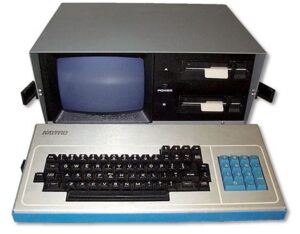Back to: Computer Studies JSS1
Welcome to class!
In today’s class, we shall be talking about the third generation of computers. I trust you will enjoy the class!
Third Generation of Computers
The third generation of computers marked a significant turning point in the evolution of computing technology. This era, spanning from the mid-1960s to the early 1970s, was characterized by the introduction of integrated circuits (ICs), which replaced bulky and unreliable transistors. This technological leap led to smaller, faster, and more affordable computers, paving the way for widespread adoption of computing technology.
Key Characteristics of Third Generation Computers

- Integrated Circuits (ICs): The defining feature of third-generation computers was the use of ICs, which combined multiple transistors and other electronic components onto a single chip. This miniaturization resulted in smaller, more compact computers.
- Enhanced Processing Power: ICs enabled significant improvements in processing power, allowing computers to execute instructions and perform calculations much faster than their predecessors.
- Reduced Power Consumption: ICs were more energy efficient than transistors, leading to lower power consumption and less heat generation.

- Improved Reliability: The integration of components onto a single chip reduced the chances of component failure, enhancing the overall reliability of third-generation computers.
- Expanded Application Areas: The advancements in third-generation computers broadened the range of applications, enabling their use in various fields beyond scientific and engineering applications.
Notable Examples of Third Generation Computers

- IBM System/360: Introduced in 1965, the IBM System/360 was a versatile family of mainframes that set the standard for third-generation computers.
- PDP-8: Developed by Digital Equipment Corporation (DEC) in 1965, the PDP-8 was a pioneer in minicomputers, bringing computing power to smaller organizations and laboratories.
- UNIVAC 1108: Introduced in 1964, the UNIVAC 1108 was a powerful supercomputer that played a crucial role in scientific research and engineering applications.
- ICL 1900: Developed by International Computers Limited (ICL) in 1965, the ICL 1900 was a series of mainframes designed specifically for the British market.
Impact of Third Generation Computers
The introduction of third-generation computers had a profound impact on society, transforming various aspects of life:
- Business and Industry: Third-generation computers enabled businesses to automate tasks, manage data more efficiently, and make better-informed decisions, leading to increased productivity and profitability.
- Science and Research: The enhanced processing power of third-generation computers facilitated complex simulations, data analysis, and scientific modeling, advancing research in various fields.
- Education: The adoption of computers in education revolutionized teaching methods, providing students with access to interactive learning opportunities and fostering technological literacy.
- Government and Administration: Computerization in government streamlined operations, improved communication, and enhanced the delivery of public services.
- Personal Computing: The development of minicomputers and personal computers laid the foundation for the personal computing revolution, empowering individuals to access and utilize computing technology.
In conclusion, the third generation of computers marked a pivotal era in the history of computing, characterized by the advent of integrated circuits and significant advancements in processing power, reliability, and affordability. These innovations paved the way for the widespread adoption of computing technology, transforming various aspects of society and laying the groundwork for the modern digital age.
We have come to the end of today’s class. I hope you enjoyed the class!
In the next class, we shall be discussing the Fourth Generation of Computers.
In case you require further assistance or have any questions, feel free to ask in the comment section below, and trust us to respond as soon as possible. Cheers!
Question Time:
- What were the key characteristics that distinguished third-generation computers from their predecessors?
- Explain how the introduction of integrated circuits (ICs) revolutionized the field of computing.
- Discuss the impact of third-generation computers on various industries, such as business, science, education, and government.
- Compare and contrast the capabilities of third-generation computers with those of today’s computers.
- Analyze the social, economic, and cultural implications of the widespread adoption of third-generation computers.
